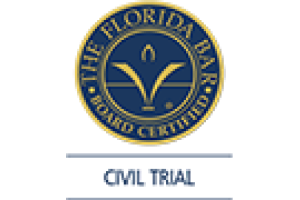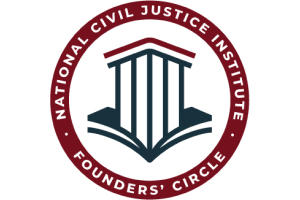Client Reviews
Determining Negligence of a Business of Property Owner
Slip-and-fall accidents account for millions of emergency room visits every year, with many resulting in severe injuries. However, a relatively small percentage result in premises liability lawsuits, let alone successful ones. That’s because no matter how severe the injury, one must first prove negligence on behalf of the business or property owner.
At Associates and Bruce L. Scheiner, Attorneys for the Injured, we know determining negligence of a business or property owner can be a complex matter. The basic elements of negligence in premises liability claims are:
- The property was in dangerous or defective condition;
- The owner or person in possession of the property knew or should have known about the danger;
- The owner or person in possession of the property had time to remedy the problem or, alternatively, warn about it, yet did neither;
- The dangerous condition proximately caused plaintiff’s injury.
Passage of Florida Statute 768.0755 in 2010 increased plaintiff burden of proof in slip-and-fall cases by requiring proof of actual or constructive knowledge. That means the existence of a dangerous condition on site alone is not going to be enough to prevail in a case. Previously, plaintiffs needed only to show the property was in dangerous condition and the property owner failed to exercise reasonable care in maintaining safety for guests.
With the new law in place, slip-and-fall lawsuits are tougher to win – but success is possible with the help of an experienced personal injury attorney.
Duty Owed to Plaintiff
One of the first things a plaintiff attorney will need to establish in a slip-and-fall case is the level of duty owed by the property owner to the plaintiff. The way to do this is to determine the plaintiff’s “status” on site. In other words, “What was he or she doing there?”
Public invitees, business invitees and licensees by invitation are afforded the greatest consideration by property owners or possessors. Public invitees are invited to enter or remain on land as a member of the public for a purpose for which land is open to the public. A business invitee is invited to enter or remain on land for a purpose related directly or indirectly to business dealings of the possessor. A licensee by invitation is a social guest.
Generally in these three instances, property owners have a duty to correct or warn of dangers that are known or should be known by the use of reasonable care and which the visitor doesn’t know, even when exercising reasonable care himself. There is a duty to maintain the property in a reasonably safe condition.
However, those standards are lower when the injured party is an uninvited licensee or trespasser. These are people who enter the property without license, invitation or other right. Usually, property owners hold only the duty to refrain from willful or wanton injury to the plaintiff. (An example might be concealed traps about which the owner has actual knowledge.)
The one exception to this is child trespassers, who are owed a greater duty of care, though it has to be shown the property owner knew children had trespassed on the property or that such an event was likely, given the existence of an attractive nuisance on site.
Actual or Constructive Knowledge
Once it’s been established that a hazardous condition existed on a property that resulted in an injurious slip-and-fall, the next element to prove is whether the property owner possessed actual or constructive knowledge of the hazard.
This is perhaps one of the hardest things to prove because defendant property owners usually aren’t going to concede knowledge of the hazard if there is no direct proof of it.
Direct proof tending to show actual knowledge might include:
Surveillance video;
- Testimony from employees indicating knowledge;
- Internal communications regarding the hazard;
- Documents of prior complaints regarding the specific condition;
- Anything tending to indicate the property owner caused the condition.
Absent proof of direct knowledge, plaintiffs will have to rely on the theory of constructive knowledge. That means even if there is no evidence the property owner knew about a specific hazard, there is enough circumstantial evidence to show the risk was foreseeable or that a reasonable property owner would have discovered it in the course of exercising reasonable care.
For example, a grocery store patron slips and falls at the entrance of the store where no mat is placed. If it’s been raining several hours prior, one could argue the risk of a fall was foreseeable under the circumstances, even if management didn’t create the hazard and had no direct knowledge of slickness near the doorway. It’s also likely that had the property owner used reasonable care, the danger would have been discovered and, over the course of several hours, could have been mitigated by placing mats and “Wet Floor” cautions signs near the door.
Failure to Mitigate or Warn
If a plaintiff can establish a property owner had actual or constructive knowledge of an on-site hazard, the next element will be showing they did not take reasonable steps to address the problem.
“Reasonable” is a term that is often subject to interpretation. Just because a property owner took some action doesn’t mean it was adequate. By the same token, just because property owner did not act does not automatically mean he or she was negligent.
To take the example of the slip-and-fall accident involving the grocery store patron. If instead of having been raining a couple hours, the rain started only a few minutes earlier, the store might not be found negligent because it might not be “reasonable” to expect action to mitigate this hazard in under five minutes.
Some questions that may be asked in determining reasonableness include:
- Did the dangerous condition last long enough that a reasonable property owner or worker would have or could have taken action to address the hazard?
- Was there a policy in place that required the routine checking for certain hazards, and if so, was that procedure followed?
- Could the hazard have been made less dangerous through simple preventative measures?
But even when immediate repairs or remedies aren’t feasible, property owners may still have a duty to warn – for example, with “Wet Floor” sign, indicating patrons should exercise greater caution.
The court may also consider whether the warning was adequate – i.e., was it timely and specific?
All of these elements considered together will help determine whether the business or property owner was negligent – and therefore, whether you have a personal injury case.
If you or a loved one has been a victim of a slip-and-fall in Southwest Florida, contact Associates and Bruce L. Scheiner, Attorneys for the Injured, for a free and confidential consultation to discuss your rights. There are no fees or costs unless we win. Offices in Fort Myers, Cape Coral, Naples and Port Charlotte.
Call 800-646-1210 for a Free Consultationx












